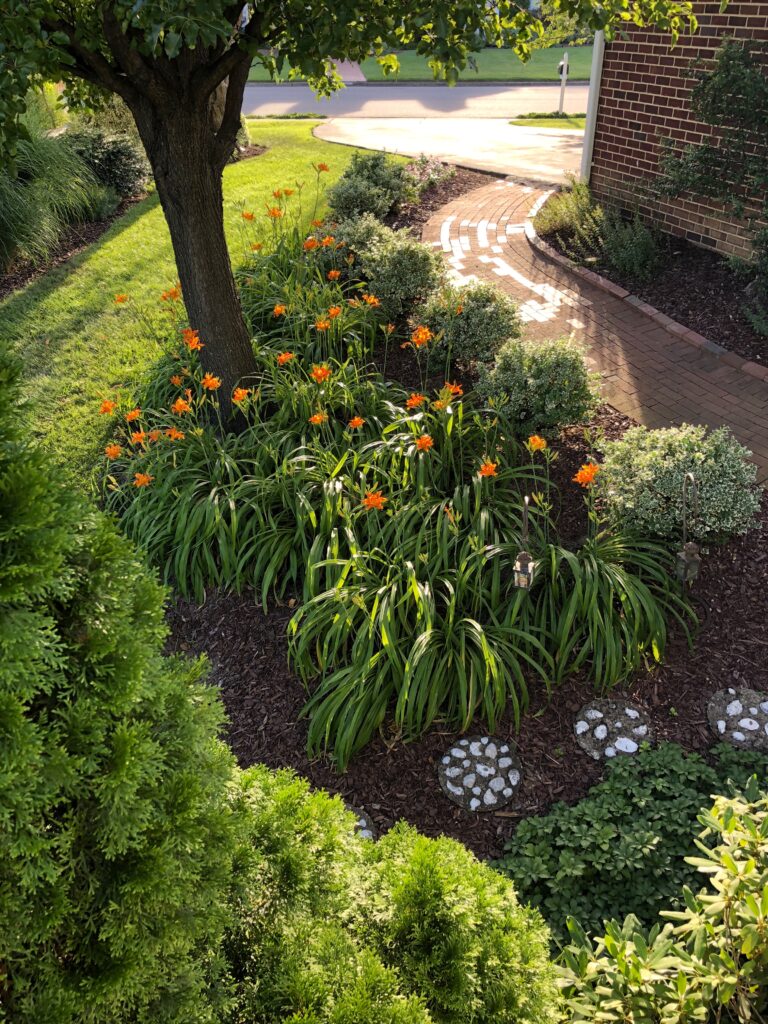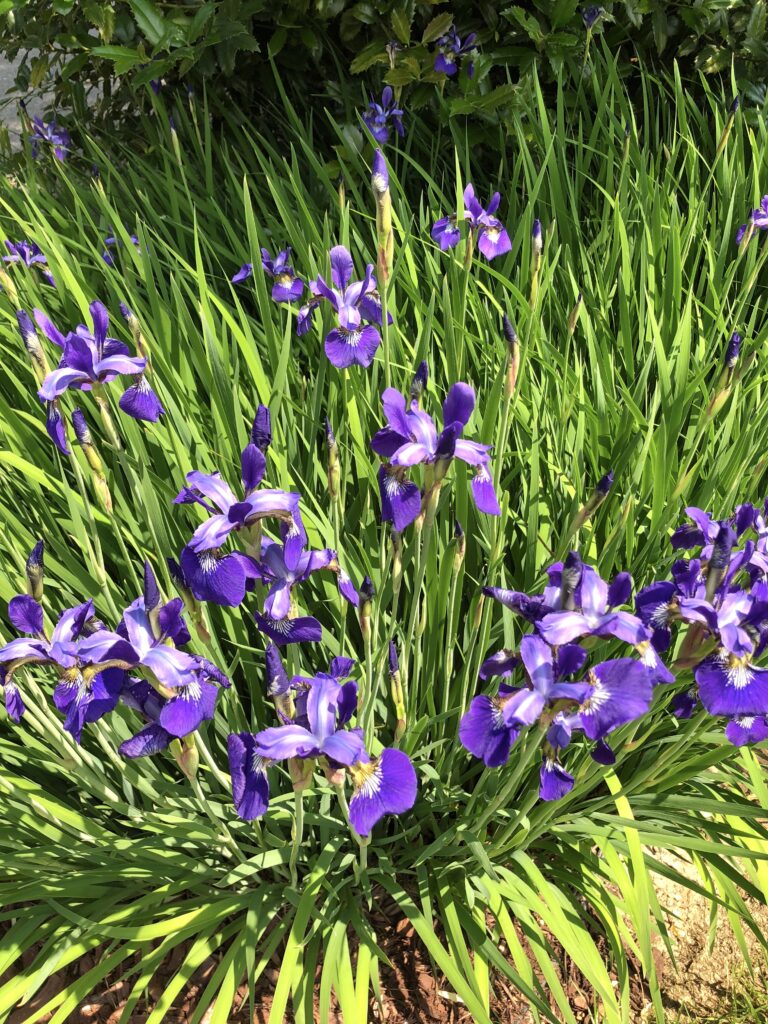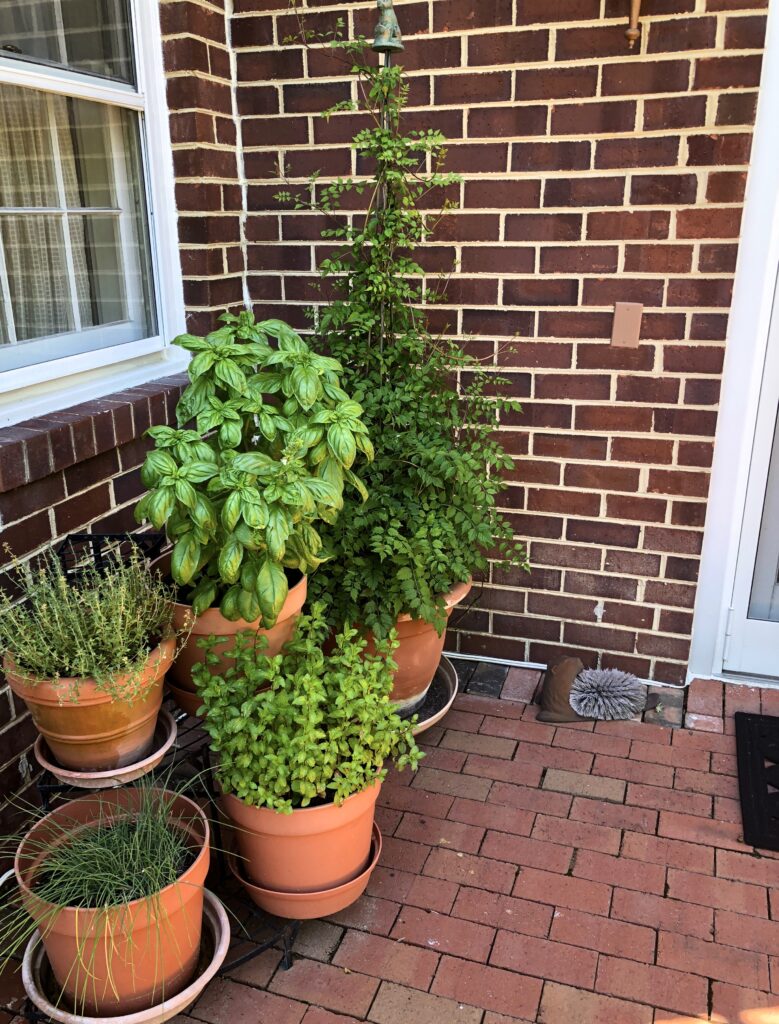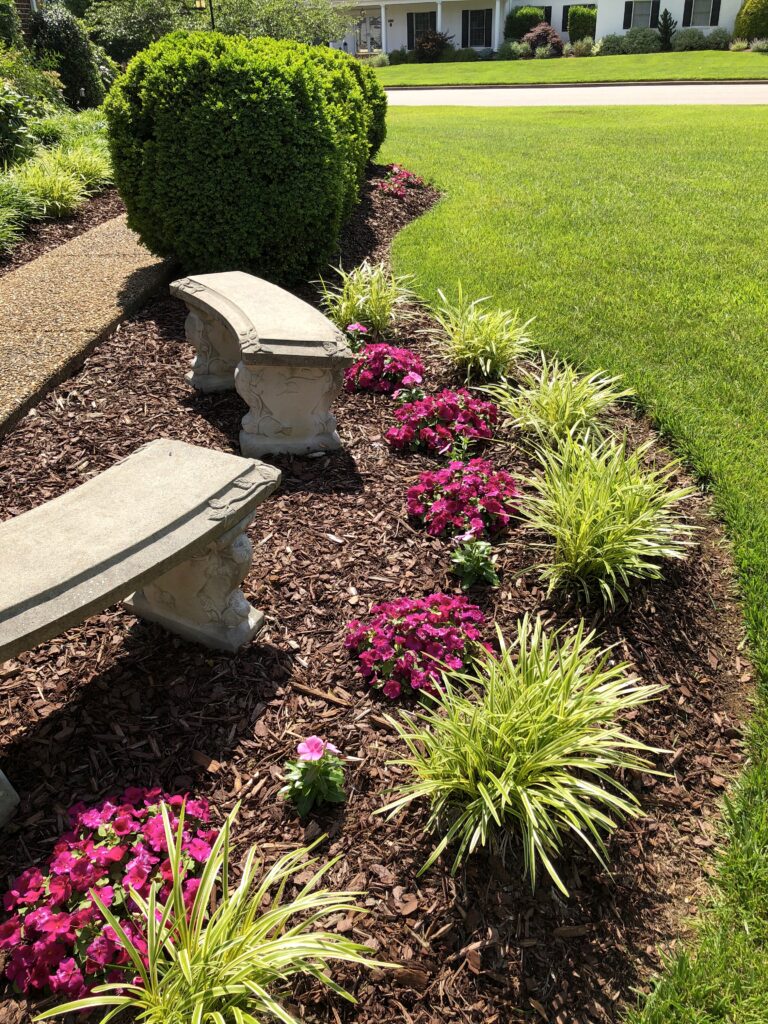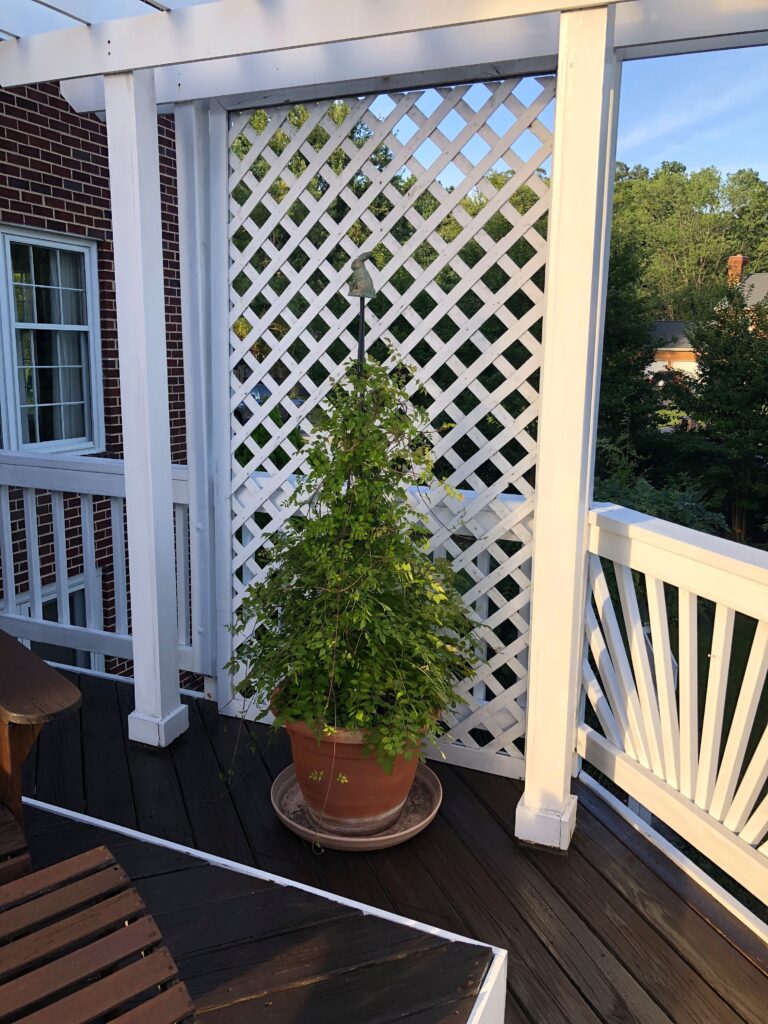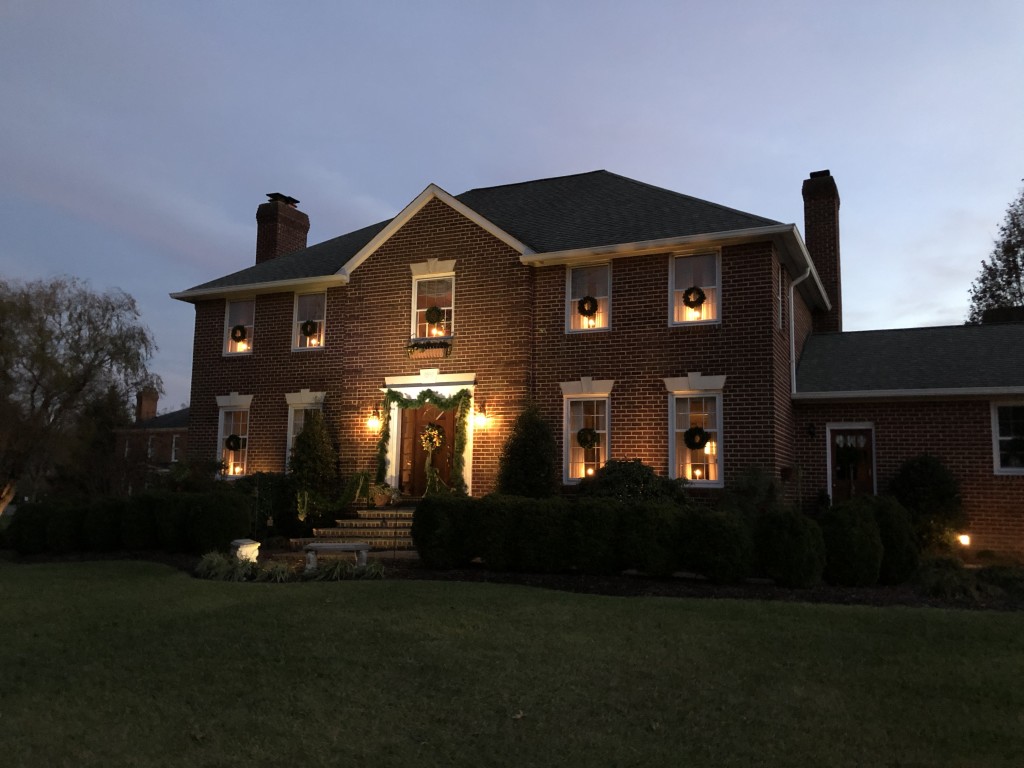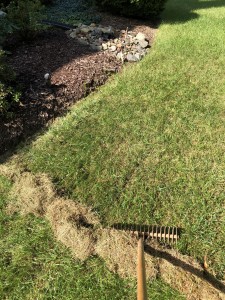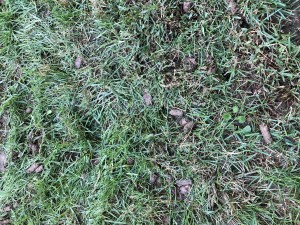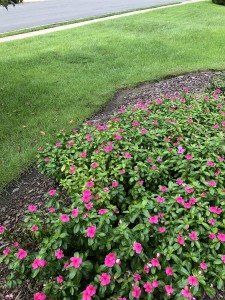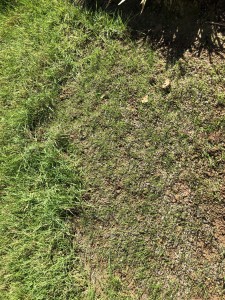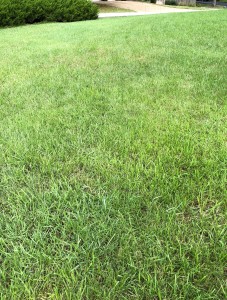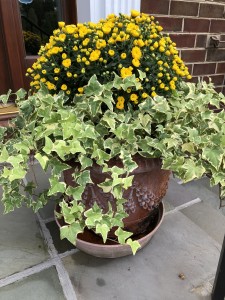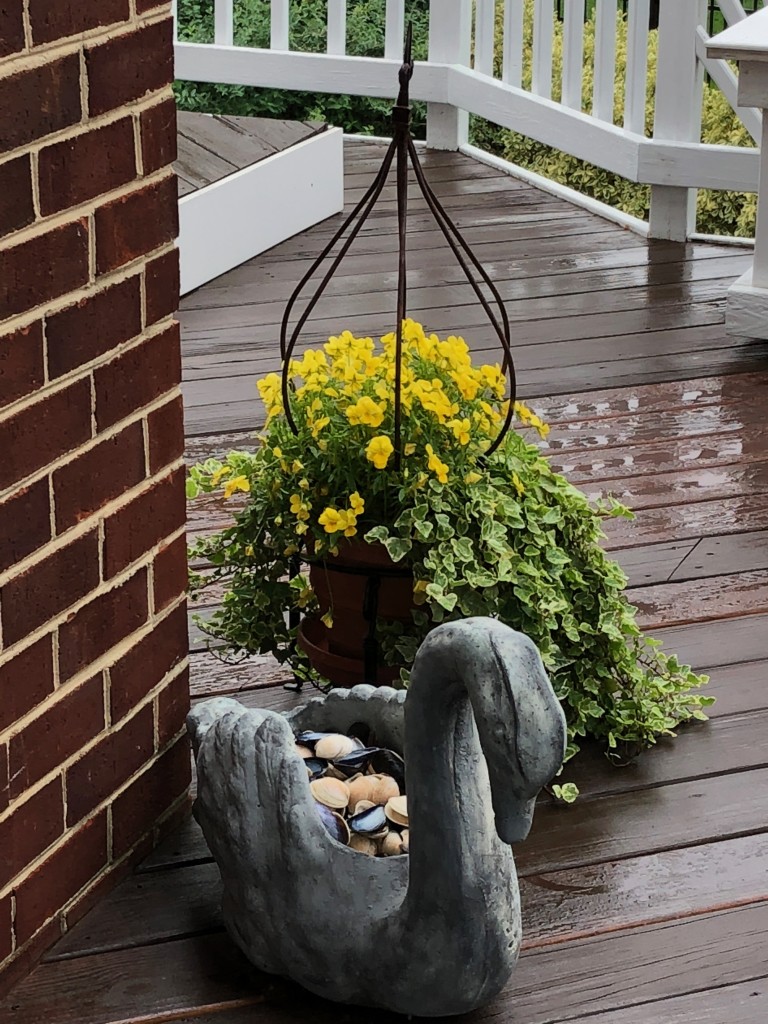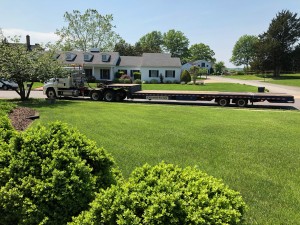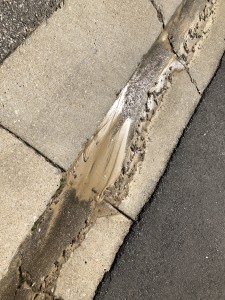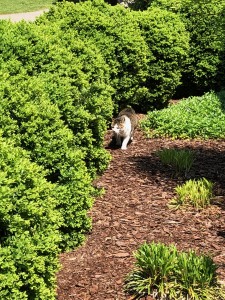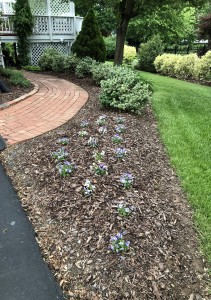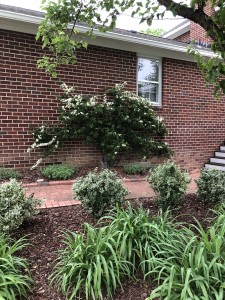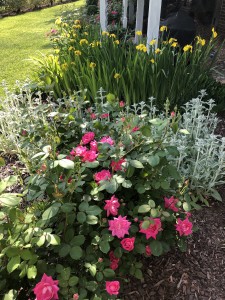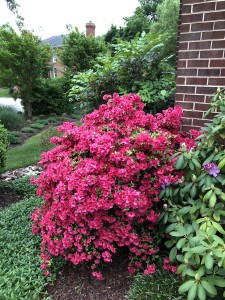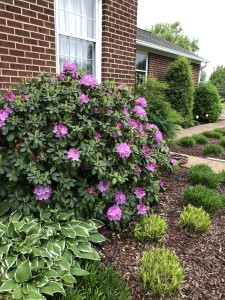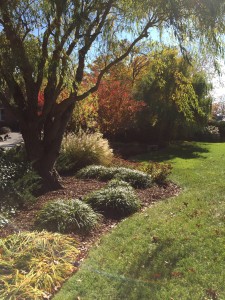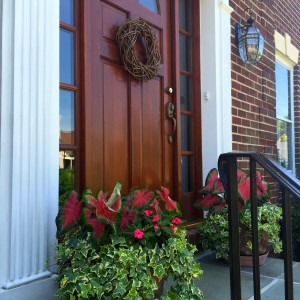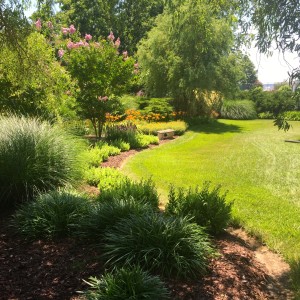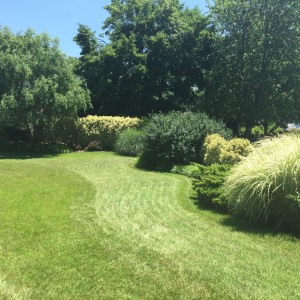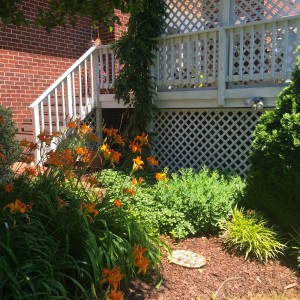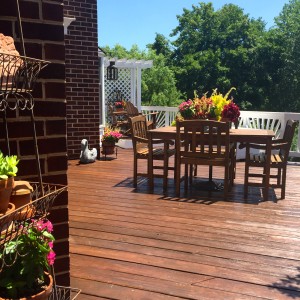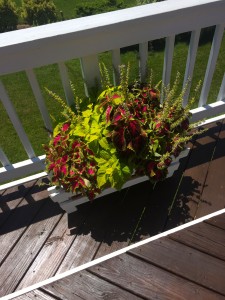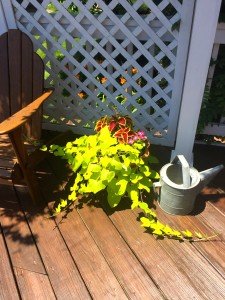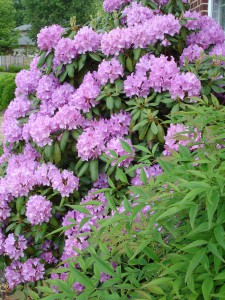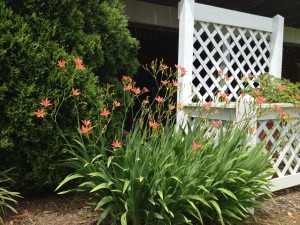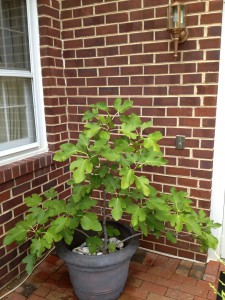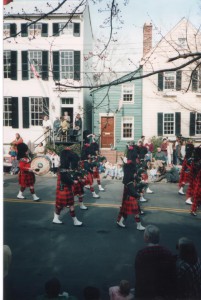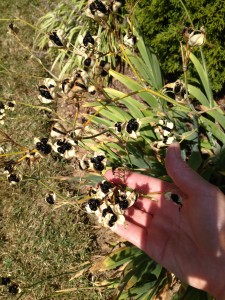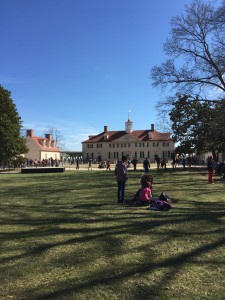
Beautiful Mt. Vernon mansion house wearing her new “old” colors again.
Each year on George Washington’s Birthday, the Mount Vernon Estate opens its gates to the public for free. As you might imagine, it is filled with people coming to celebrate the day. Since it’s right down the street from my home, I try to go every year. There is always something that is undergoing a renovation, and it’s great to see what’s newly been uncovered with all the advancements in technology they have. The mansion house has now been painted with colors that have been discovered to be the original — very different from the colors we all thought for years to be accurate. For at least the last century, it has been painted white and it’s bright red roof shown against the blue sky. Now the colors are much softer and more muted. A golden tan is on the field of the house, and the roof is a much softer red. It’s very pretty, but for those of us who see it everyday, quite a change!

The amazing view from the veranda looks exactly as it did when George Washington lived there.
The “back yard” of the house it is still just as it was when President Washington lived there. Believe it or not, the view from the veranda has been protected in a way that you cannot see any other structures across the Potomac River — 80 square miles of protection to be exact! I think that’s an amazing accomplishment. All the lawn that you see is trimmed by a scythe, no mowers used here. It’s quite impressive to watch. The estate’s team of gardeners have a wealth of knowledge about the colonial era tools, and there are special tours where they will demonstrate many of them. If you get a chance to visit, you might want to call ahead and request a special tour!
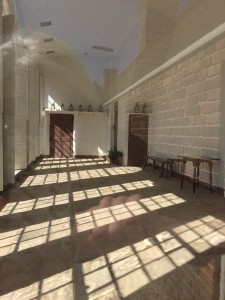
The inside of the orangery at Mount Vernon.
This year I went specifically to see the orangery and it’s surrounding garden. This area was used in housing the small citrus trees that they grew in planters. The trees would be outside in the warm months and moved indoors into the orangery in the winter. It has a dark colored slate floor, and masonry walls which would soak up all the warmth from the sun during the day through the south facing, floor to ceiling windows. Then in the evening, the shutters would be closed, and the floor would radiate it’s heat back into the room, keeping it above freezing, and all it’s tender trees and plants would be kept alive. They have not quite finished this renovation and the plants are not inside yet, but soon it will be full of tender plants.
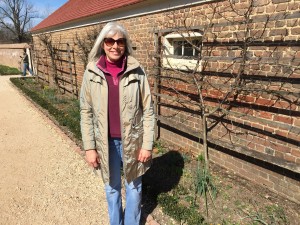
Enjoying a warm and beautiful walk in the brick walled garden. A cherry tree espallied against the wall is almost ready to spring back into growing from the extra warmth of the wall.
On the outside of the building there is a large garden surrounded by brick walls to protect against nibbling deer and other animals. This area was mainly used to start new plants for transplant into the other landscaped areas and was used as sort of a colonial era plant nursery. President Washington was the recipient of many gifts of plants and new varieties of seeds and, according to his journals, enjoyed experimenting with them.
The walls of the garden have many different varieties of espallied trees — mostly fruiting trees like apple, peach, fig and cherry. They were grown against the walls for extra warmth to prolong the growing season, and also pruned to just a few feet tall, to make harvesting the fruit easy. The colonial people were very clever in their farming practices!
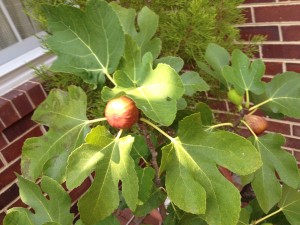
This fig was from a past Mount Vernon plant sale, one of the Washington’s favorite!
Along the brick lined paths they additionally would grow herbs and medicinal plants. A very diverse variety of plants grew there. The tiny little boxwood plants that you see edging the walk, figs trees, herbs and many other plants and seeds are sold in the annual plant sale fundraiser, coming up in Garden Week, another really fun event!
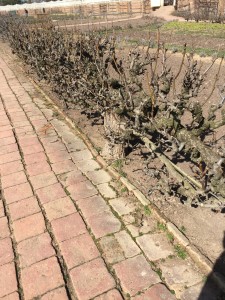
Here is a close up on the apple trees in the larger vegetable garden. February and early March are when they are pruned to keep them low, and easy to harvest.
There is a huge vegetable garden on the other side of the mansion as well. With hundreds of mouths to feed, this was a most important garden, and it was in constant rotation of crops. Lettuces, cabbage, carrots, potatoes, melon and many more things grew here. This season the early spring onions and cabbages were looking great.

A dove with an olive branch sits atop the cupola on the mansion house- — what a fantastic view!
I always hate to leave Mt. Vernon estate, but the afternoon was coming to an end. So until I am back there next year, Happy Birthday George Washington! And happy gardening to the rest of us-
Save
Save
Save
Save
Save
Save
Save
Save
Save

